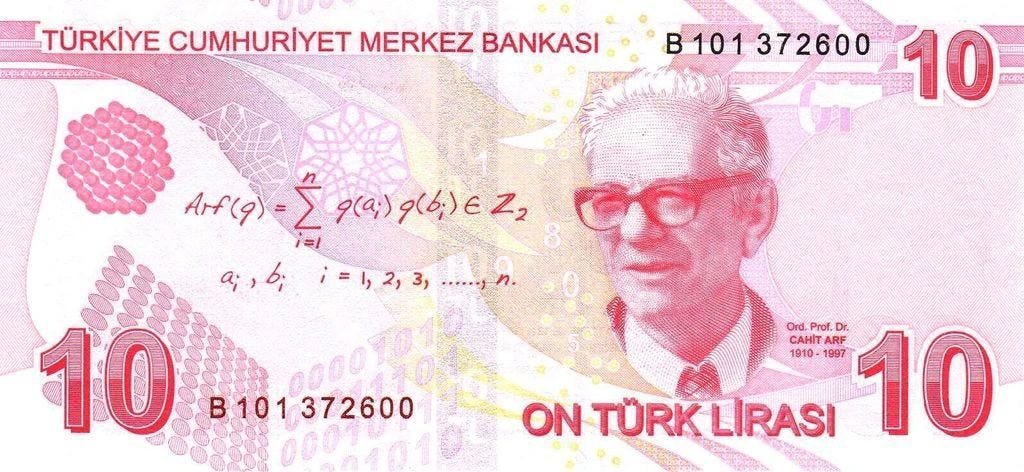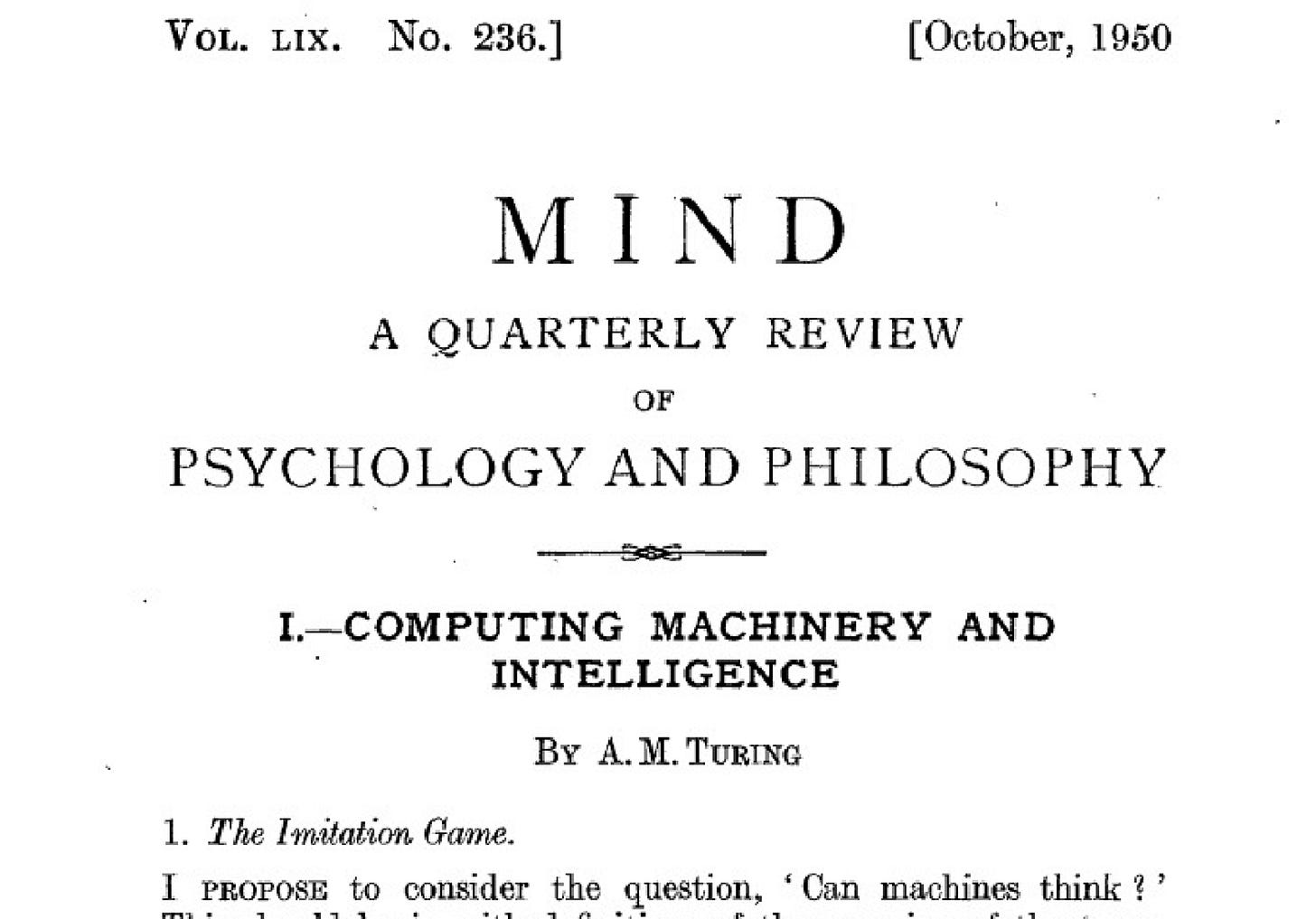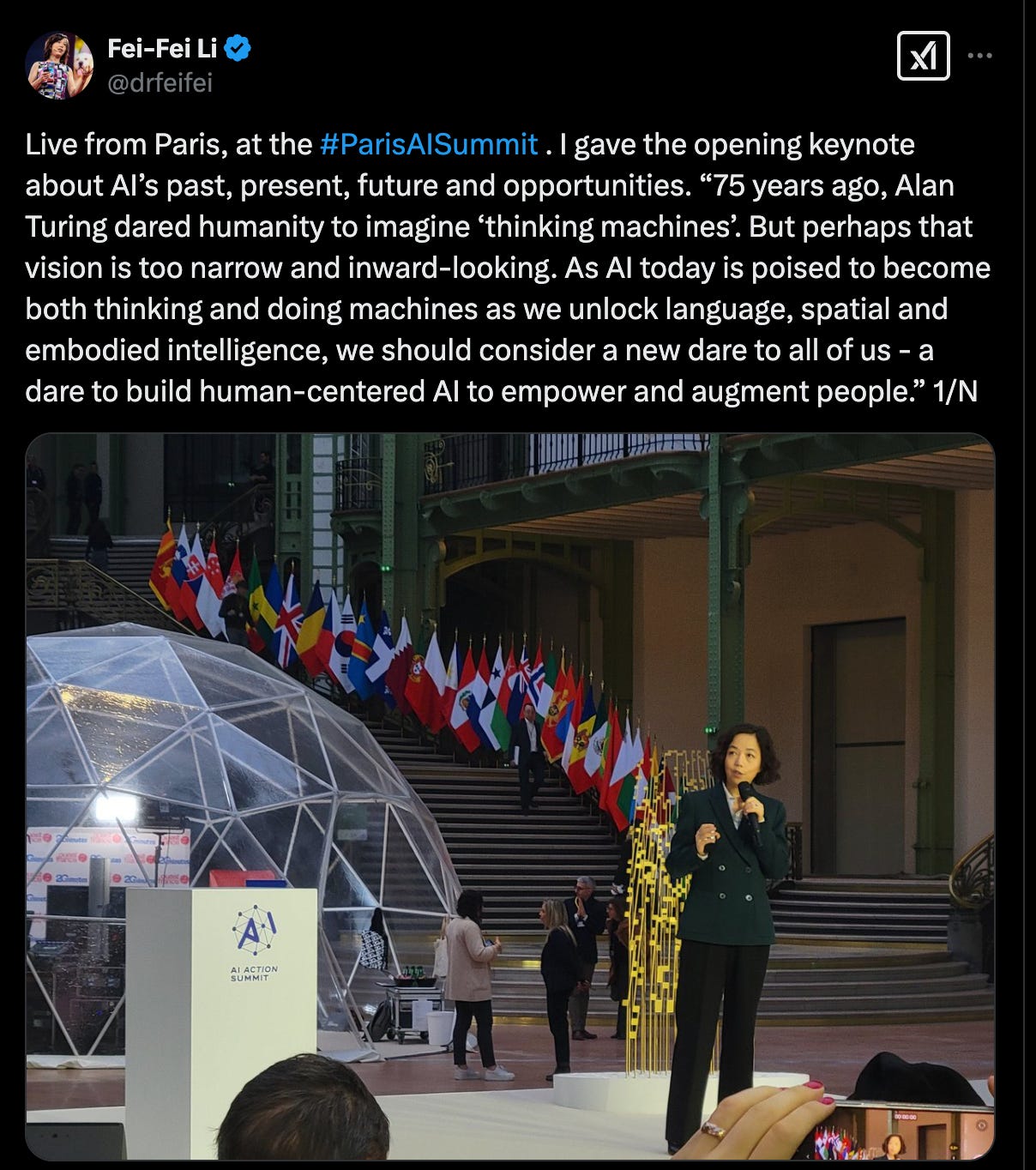Can Machines Think? Turing & Cahit Arf
from Early AI Inquiries to the Modern Landscape of Machine Intelligence
I still remember the days when a 10 Turkish Lira note was something we use— bearing the familiar face of Cahit Arf. Even though inflation has long since pushed that note into the past, every time I recall it, I’m reminded of our proud heritage and the pioneers who paved the way in science and technology.
When you talk about the big names in AI—Alan Turing, Ada Lovelace—they are always in the spotlight. Yet, I wish to pay tribute to a remarkable mind from Türkiye, whose inquiry remains as a heritage to Turkish community. Cahit Arf.
In 1958, at a public conference in Erzurum during the academic year of Atatürk University, Cahit Arf echoed the question: "Makine düşünebilir mi ve nasıl düşünebilir?" (Can machines think, and how can they think?). Although Arf is primarily celebrated for his contributions to mathematics—especially the concept of the Arf invariant—this provocative inquiry exemplifies his broader curiosity about the nature of intelligence. At a time when ideas about artificial intelligence were only beginning to form, Arf challenged the scientific community to explore the boundaries between human thought and machine capability.
Today, amid the rapid evolution of AI—from neural networks to deep learning models like GPT-4—Arf’s question remains as provocative and relevant as ever. This article is a personal journey back to that seminal moment, examining how his inquiry has helped shape our understanding of machine intelligence and continues to inspire us as we navigate this brave new era of technology.
Let’s step back in time to rediscover Arf’s vision and trace its influence on our modern landscape.
From Turing’s Imitation Game to Arf’s Bold Inquiry
Back in the 1950s, the world of artificial intelligence was just beginning to take shape. Alan Turing famously opened the debate with “I propose to consider the question, ‘Can machines think?’” and instead of getting tangled in the ambiguity of what “thinking” really meant, he proposed the “imitation game,” now widely known as the Turing test. Turing’s idea was simple yet powerful: if a machine’s responses are indistinguishable from those of a human, then the question of whether it “thinks” becomes moot.
Turing argued that if you cannot tell the difference between a person and a machine during conversation, then the machine might well be said to “think.” He placed a tremendous bet on the power of learning—believing that with sufficient training and robust algorithms, machines would eventually mirror human cognitive processes. In addressing common objections—whether theological or rooted in strict mathematical logic—Turing dismissed critiques that relied on outdated or overly rigid perspectives. His vision laid the practical and philosophical groundwork for modern AI by providing a measurable framework for machine intelligence.
Cahit Arf’s Bold Inquiry at the 1958 Erzurum Conference
Fast forward to 1958 in Erzurum, where Cahit Arf took a slightly different approach. At a public conference celebrating the start of Atatürk University’s academic journey, the atmosphere was charged with curiosity and innovation. In that vibrant setting, Arf boldly asked, “Makine düşünebilir mi ve nasıl düşünebilir?”—a question he later published in 1959. Although his legacy is chiefly rooted in mathematics, this inquiry demonstrated his willingness to engage with the practical aspects of machine design.
Arf’s approach was markedly pragmatic. While Turing had provided a theoretical framework, Arf offered tangible examples—comparing everyday devices like an old alarm clock or a telephone to early “thinking” machines. These analogies were not meant to suggest that these devices possessed true intelligence, but rather to illustrate how even simple machines could process language, perform calculations, and draw analogies—a modest beginning toward mimicking human cognitive functions.
Yet, Arf recognized a fundamental limitation: the divide between human and machine might lie in the elusive realm of aesthetic consciousness. While a machine is good at computations or follow instructions, it would likely fall short of capturing the human capacity to appreciate beauty, make ethical judgments, or exhibit that unpredictable spark of creativity. Which also set a foundation that resonates with the dilemmas we face today.
Though the tools and techniques have transformed—from analog devices to neural networks—the fundamental question that Arf posed still echoes in contemporary discussions on AI ethics and capability
Merging the Two Legacies: A Unified Vision
Viewed side by side, Turing’s theoretical blueprint and Arf’s practical inquiry form two complementary halves of the same puzzle. Turing’s imitation game challenges us to push the boundaries of machine learning and behavior, while Arf’s insights remind us to cherish the uniquely human qualities that no machine can replicate. Though Arf is more widely known for his mathematical achievements, his provocative question about machine intelligence offers a culturally resonant perspective that enriches our dialogue on AI.
For me, merging these perspectives is like connecting two halves of a puzzle. Turing’s approach propels us forward to expand what machines can learn and achieve, while Arf’s reflections encourage us to safeguard the aesthetic and emotional facets that define humanity. Together, their legacies prompt us not only to ask, “Can machines think?” but also, “Can they ever capture the full essence of what it means to be human?”
Contemporary Relevance and Reflections
Today, modern AI systems—such as deep learning models and complex neural networks—are reshaping our world in extraordinary ways. We have machines capable of processing language, solving intricate problems, and even “reasoning” in ways that can deceive human observers. Yet, does this mean these systems are truly thinking? Opinions remain as diverse as they are passionate.
Turing’s Enduring Blueprint
Turing’s original notion—that if a machine’s responses are indistinguishable from a human’s, then it must be intelligent—continues to serve as a critical baseline. Modern systems like GPT-4 may excel at text-based interactions, yet many experts argue that passing the Turing test addresses only mimicry, not genuine understanding or consciousness.
Turing’s optimism about continuous learning and ever-improving algorithms has been borne out in part by contemporary advances in reinforcement learning and hierarchical planning frameworks (consider tools like AutoGPT and LangChain). Nevertheless, the debate endures: are these machines truly “thinking,” or are they merely sophisticated pattern matchers?
Arf’s Grounded Inquiry and the Human Touch:
Arf demonstrated through practical examples how machines could be engineered to process language, perform calculations, and filter irrelevant data—functions that echo human cognitive processes. However, he also cautioned that true human thought transcends mere logic; it involves aesthetic judgment, ethical discernment, and a creative spark that machines may never fully replicate.
Arf’s perspective, rooted in our cultural and intellectual heritage, reminds us that even as AI systems achieve remarkable technical feats, they might never encapsulate the full spectrum of human experience—beauty, love, and empathy remain, for now, uniquely human.
Modern AI Leaders and the New Frontier:
Voices like Mustafa Suleyman propose rethinking the Turing test for today’s world. Instead of merely assessing if a machine can imitate human conversation, a modern test would evaluate if an AI can make meaningful impacts—such as generating $1 million on a retail platform with minimal oversight. This shifts the focus from imitation to tangible, real-world performance.
Sam Altman and other top industry voices argue that if an AI can consistently deliver responses that resonate with human reasoning—if it can parse complex scientific papers, craft creative art, and even solve novel problems—then, in a practical sense, it’s thinking. They point to breakthroughs like DeepMind’s Gemini, which is exploring what some call “flash-thinking”—rapid, almost instinctive responses that hint at a form of machine intuition, even if it isn’t identical to human consciousness.
As AI systems begin to integrate into every facet of our lives—from healthcare to infrastructure—the conversation is shifting from AI as a tool to AI as a digital species. These systems are evolving beyond static algorithms; they’re becoming interactive, autonomous partners that can learn, act, and even collaborate.
The Ongoing Debate: Critics still contend that modern AI systems are essentially dazzling simulations. They compare these systems to a refined version of the “Chinese room” argument: a machine might fool us into believing it’s truly thinking, yet it might simply be executing highly sophisticated pattern matching without any real understanding or self-awareness.
The Future of AI: Beyond Imitation to Impact:
As we stand on the cusp of an era that some refer to as Artificial Capable Intelligence, the ultimate measure of AI will not be its ability to mimic human conversation, but its capacity to effect meaningful change. Imagine systems that can autonomously manage businesses, drive scientific innovation, or even run public services with minimal oversight. Yet with such promise comes profound responsibility:
rigorous safety protocols, ethical guidelines, and an unwavering commitment to human values.
In the end, the question “Can machines think?” has led us to a deeper inquiry: What does it truly mean to think, to create, and to be human? As we continue to redefine intelligence and innovate boldly, we must honor the legacies of both Turing and Arf—ensuring that our journey into this new frontier is guided by wisdom, empathy, and a steadfast commitment to the betterment of humanity.
Until next time, keep questioning, keep innovating







